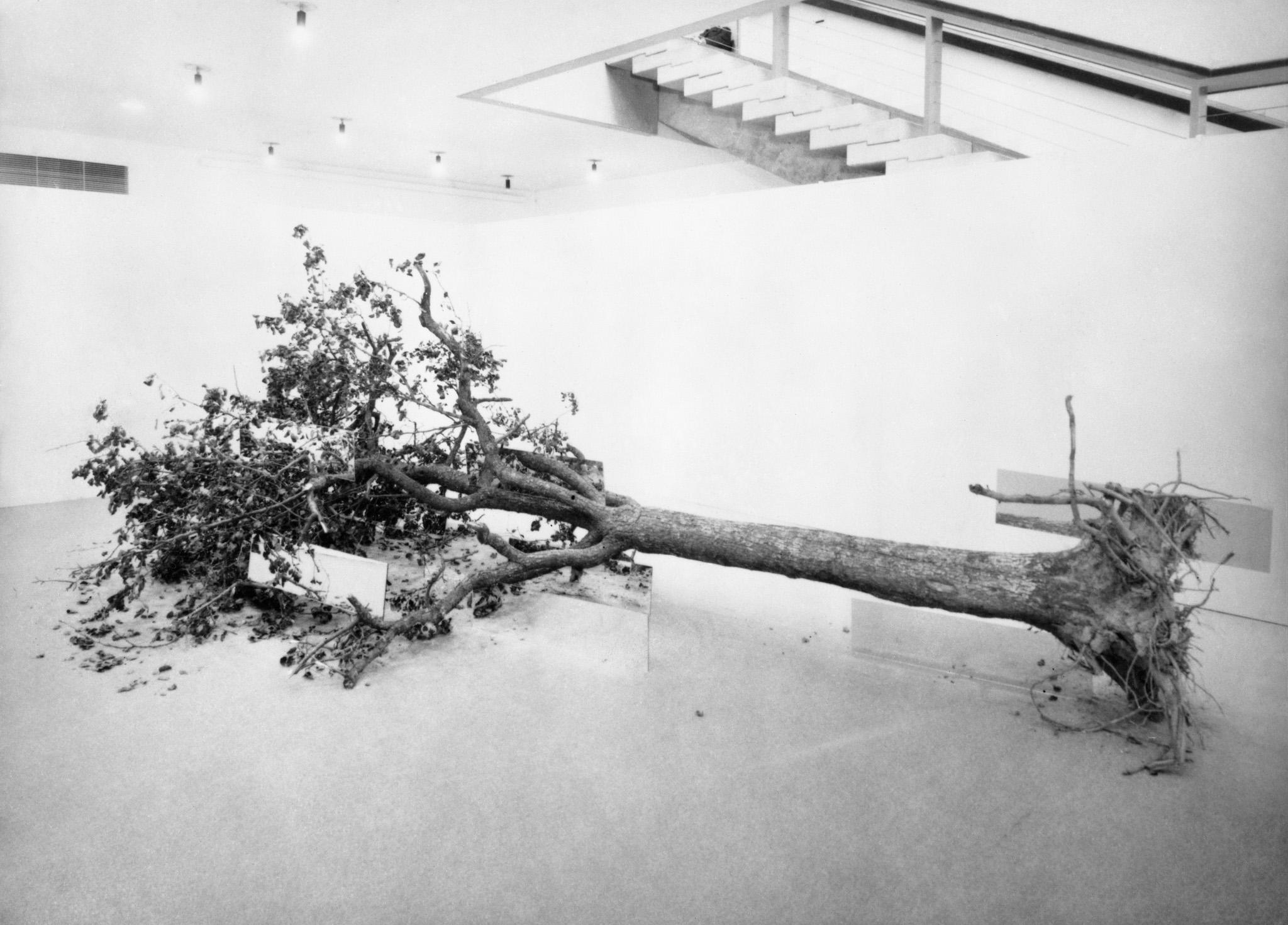Tree, mirrors
Dimensions variable, tree is approximately 20 feet long
© Holt/Smithson Foundation / Licensed by Artists Rights Society, New York
Robert Smithson’s 1969 sculpture Mirror Displacement: Indoors—sometimes colloquially referred to as “Dead Tree”—was created for the landmark exhibition Prospect 69 at Kunsthalle Düsseldorf, Germany. It comprises a recently uprooted tree and a series of double-sided mirrors that are placed within the root-ball, trunk and branches.
Mirror Displacement: Indoors is an important large-scale sculpture that speaks to Smithson’s enduring interest in non-human temporalities. The mirrors double and distort the tree, its surroundings, and those who perceive it, while the tree slowly changes over time as natural entropic processes take their course. 1969 was a year when Smithson traveled across the United States, to Europe, and to Mexico. In February he presented his first Mirror Displacements in the exhibition Earth Art at Andrew Dickson White Museum of Art in Ithaca, New York—one of the earliest exhibitions exploring the idea of land art. Discussing this project with William C. Lipke, Smithson described "I'm using a mirror because the mirror in a sense is both the physical mirror and the reflection: the mirror as a concept and abstraction; then the mirror as a fact within the mirror of the concept."
In April he travelled to Mexico and expanded these ideas through his Yucatán Mirrors Displacements and the accompanying essay "Incidents of Mirror-Travel in the Yucatan," first published in Artforum magazine. Throughout 1969 Smithson was also working with trees, making drawings combining trees and vines with mirrors, and realizing his series of Upside Down Trees that subvert the natural order by inverting trees in the earth. Each was created on site: first in Alfred, New York, then Captiva Island, Florida, and finally in Yucatán, Mexico. In the fall Smithson continued making Mirror Displacements outdoors—for example, Mirror Displacement (Brambles) made while traveling through England before arriving in Germany to participate in Prospect 69.
Mirror Displacement: Indoors coalesces and expands Smithson’s Mirror Displacements and Upside Down Trees, and draws on his sustained investigation of entropic forces. The first presentation of Mirror Displacement: Indoors most likely used a pear tree, sourced from Langenfeld in Germany by Smithson and the artist Klaus Rinke. Smithson directed the installation of the tree, positioning it horizontally on the gallery floor. Every presentation uses a locally sourced tree already scheduled to be felled, measuring between twenty and forty feet long, including the root ball. According to Smithson’s instructions, the tree is always destroyed after each exhibition.
Until January 2026, the sculpture is on show in Casting a Glance: Dancing with Smithson at Marian Goodman Gallery, Los Angeles.

















